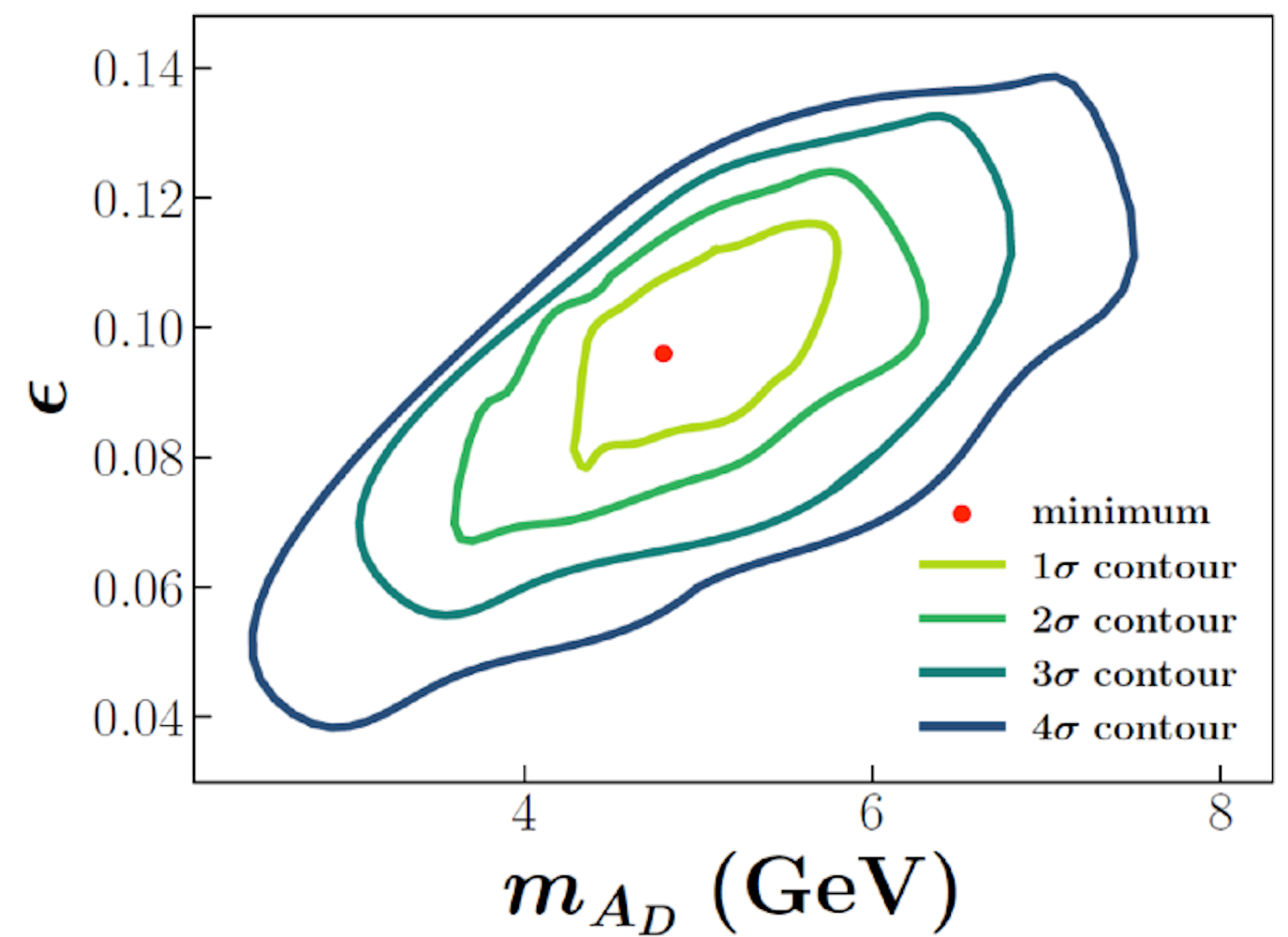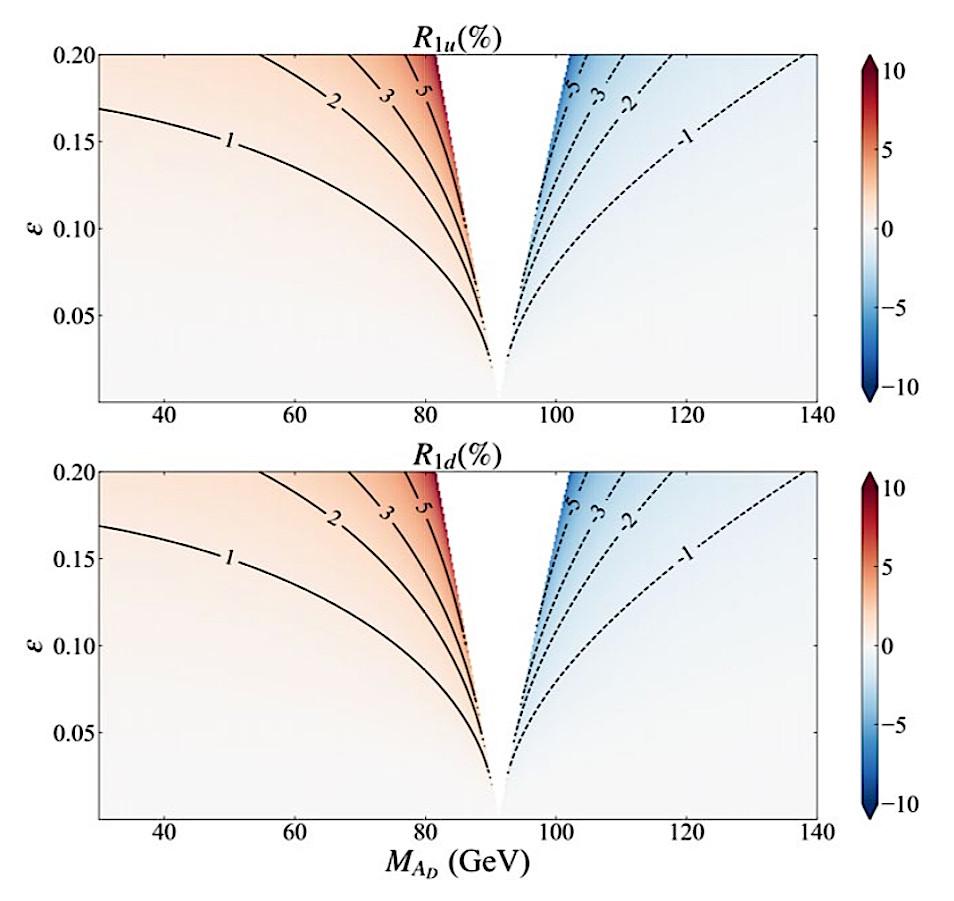Centre for Dark Matter Particle Physics
The nature of dark matter is one of the great questions of modern physics.
We know dark matter ("DM") exists- but we do not yet know what it is. This is no small problem, since dark matter constitutes nearly five times as much of the universe's mass-energy as does the ordinary (or baryonic) matter that we see (us, our world, planets, stars, galaxies...).
The ARC Centre of Excellence for Dark Matter Particle Physics (CDMPP) is dedicated to this question. What is dark matter? What are its properties? What role does it play in the universe? Can we detect it?
The Adelaide node of the CDMPP hosts researchers and students who are part of this endeavour. Our work ranges from theoretical research into the possible nature of dark matter particles, to helping to build the southern hemisphere's first underground dark matter direct-detection experiment.
We collaborate not only with the other CDMPP nodes (and associated institutions such as ANSTO) across Australia, but also with researchers at overseas institutions such as CERN, INFN/LNGS, MIT and Caltech, amongst others.
The structural relationship between dark matter (red), gas (blue) and galaxies (yellow), in a simulation by Florent Renaud.
Science/engineering-based video channel Veritasium visited Australia recently, producing a video discussing the search for dark matter, and the roles of SABRE South and SUPL in this endeavour.
Research Areas
-
Experimental
The Adelaide node is involved in the construction of the SABRE South direct-detection experiment. This experiment will hunt for a candidate type of particle known as WIMPs (Weakly-Interacting Massive Particles), and will be located around 1,000 metres below ground in the Stawell Underground Physics Laboratory (SUPL) in western Victoria.
We are contributing effort in a number of areas, including:
- modelling and experimental characterisation of the background radiation in SUPL;
- simulation of the overall behaviour of the experiment, using GEANT4
- the optical calibration system for the liquid veto;
- crystal purity measurements;
- the fluid-handling system (high-purity nitrogen, liquid scintillator);
- and to broader areas such as organisation and equipment specifications.

The main hall of the Stawell Underground Physics Laboratory. The first underground physics lab in the southern hemisphere, this will be the home of the SABRE South experiment. (Credit: Prof. Anthony Williams)

Cutaway view of the SABRE South vessel. The NaI(Tl) crystal enclosures are in the centre. The interior of the vessel, to be filled with liquid scintillator, is fitted with 18 photomultiplier tubes to detect veto events not due to potential dark-matter interactions. The vessel is surrounded by steel and high-density polyethylene shielding, with a muon detector array above.
-
Theoretical
We also undertake investigations into the theoretical side of dark matter physics, including the following:
- using the SABRE experiment for the detection of axions (another class of candidate DM particles, of much lower mass than WIMPs);
- the inelastic boosted dark matter (IBDM) model, which will be tested by the SABRE experiment;
- a two-component dark matter model, taking into account the gravitational focusing effect, which will attempt to put constraints on the dark matter parameter space by analysing the experimental data of direct detections;
- dark photon searches from the global QCD analysis (with JAM Collaboration at Jefferson Lab, USA).
-
International Lattice Data Grid
The CSSM acts as the regional grid for Australia within the International Lattice Data Grid (ILDG), a worldwide effort to make valuable data sets from lattice QCD simulations available throughout the international scientific community.
Research notes
-
Hint of the Existence of a BSM Particle: A Dark Photon
Published in the Journal of High-Energy Physics
The existence of dark matter has been firmly established from its gravitational interactions, yet its precise nature continues to elude us despite the best efforts of physicists around the world. The key to understanding this mystery could lie with the dark photon, a theoretical massive particle that may serve as a portal between the dark sector of particles and regular matter.
In our recent work - a collaboration between CSSM, the Adelaide node of the ARC Centre of Excellence for Dark Matter Particle Physics and Jefferson Laboratory - we study the potential effects a dark photon could have on the interpretation of existing experimental results from the deep inelastic scattering process.
Specifically, we make use of the state-of-the-art Jefferson Angular Momentum collaboration (JAM) global analysis framework for parton distribution functions, modifying the underlying theory to allow for the effect of a dark photon. We show that the dark photon hypothesis is preferred over the Standard Model hypothesis at a significance of 6.5 sigma, which constitutes strong evidence, albeit indirect, for a particle discovery.

Profile likelihood showing preferred regions for the dark photon mass and mixing parameter. This suggests that the Standard Model is disfavoured at 6.5σ.
-
Sensitivity of Parity-violating Electron Scattering to a Dark Photon
The ARC Centre of Excellence for Dark Matter Particle Physics (CDMPP) aims to discover what this mysterious stuff, dark matter, is made of. It is five times as plentiful as the baryonic matter we have explored so successfully, and of which we are composed. We do not know what kind of particle it is, but we (along with a very large number of people around the world) want to understand this. One key approach is the SABRE experiment that is being built in a new laboratory in a gold mine (1km underground) in Stawell, which will hopefully shed light on this question in a few years.
The present work, published in Physical Review Letters1, explores the possibility that dark matter is in the form of a dark massive photon. In particular, we explore the discovery potential of the new tool enabled by the upgrade at Thomas Jefferson National Accelerator Facility (JLab) in the United States.
This new tool is parity-violating electron scattering. Parity violation is, simply put, the difference between what happens in the laboratory and what happens when you view the experiment in a mirror. The differences are very small, typically less than a part per million, but incredibly precise measurements enable us to observe this and use it as a signal of the existence of this new particle.
We show that the effects of this new particle may reconcile a surprising discrepancy between the neutron density in a lead nucleus inferred from the PREX experiment at JLab, and that predicted by nuclear structure theory. We also show that there may be corrections as large as 10% in the valence quark distributions extracted from data taken at HERA in Germany. Finally, it is shown (see figure below) that a future experiment comparing electron and positron deep inelastic scattering on the deuteron could provide a vital test of the existence of such a particle.1 A. W. Thomas, X.-G. Wang and A. G. Williams, Physical Review Letters 129 (2022) 011807

Relative size of the correction to the measured difference in the cross-section for electron versus positron scattering from the deuteron.
People
Chief Investigators:
- Professor Anthony Williams (Deputy Director, CDMPP)
- Professor Anthony Thomas
- Professor Paul Jackson
- Professor Martin White (Adelaide Node Leader)
- Associate Professor Gary Hill
Please see the main NUPP page for a full list of personnel within Nuclear and Particle Physics.
CDMPP staff and students will be listed as "CDMPP" under the Area item in their entry.
Contact
Tel: +61 831 33533
Email: cssm@adelaide.edu.au
Location:
Room 126, Physics Building, North Terrace campus, University of Adelaide
Page author and maintainer : Dr. Padric McGee
